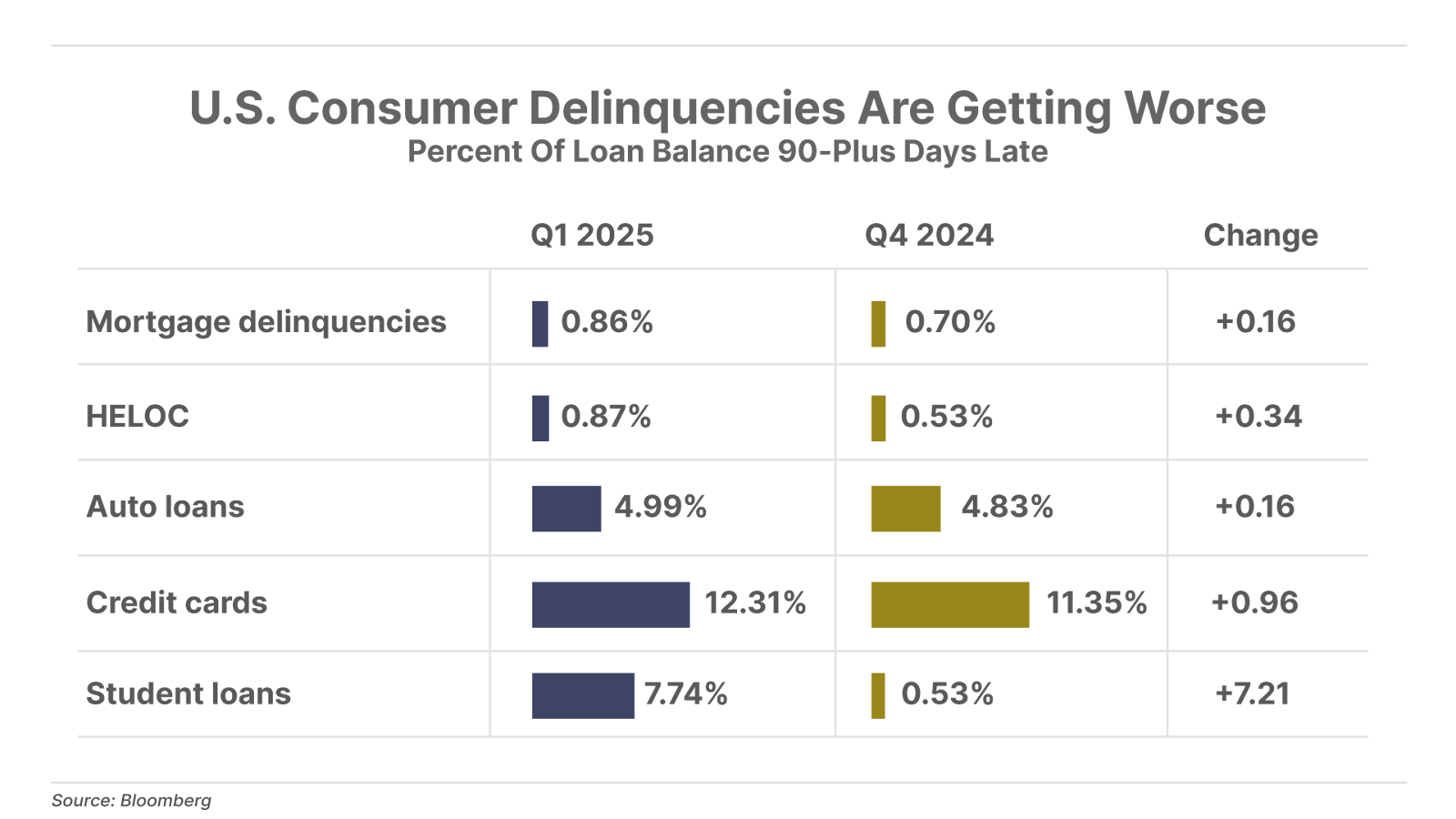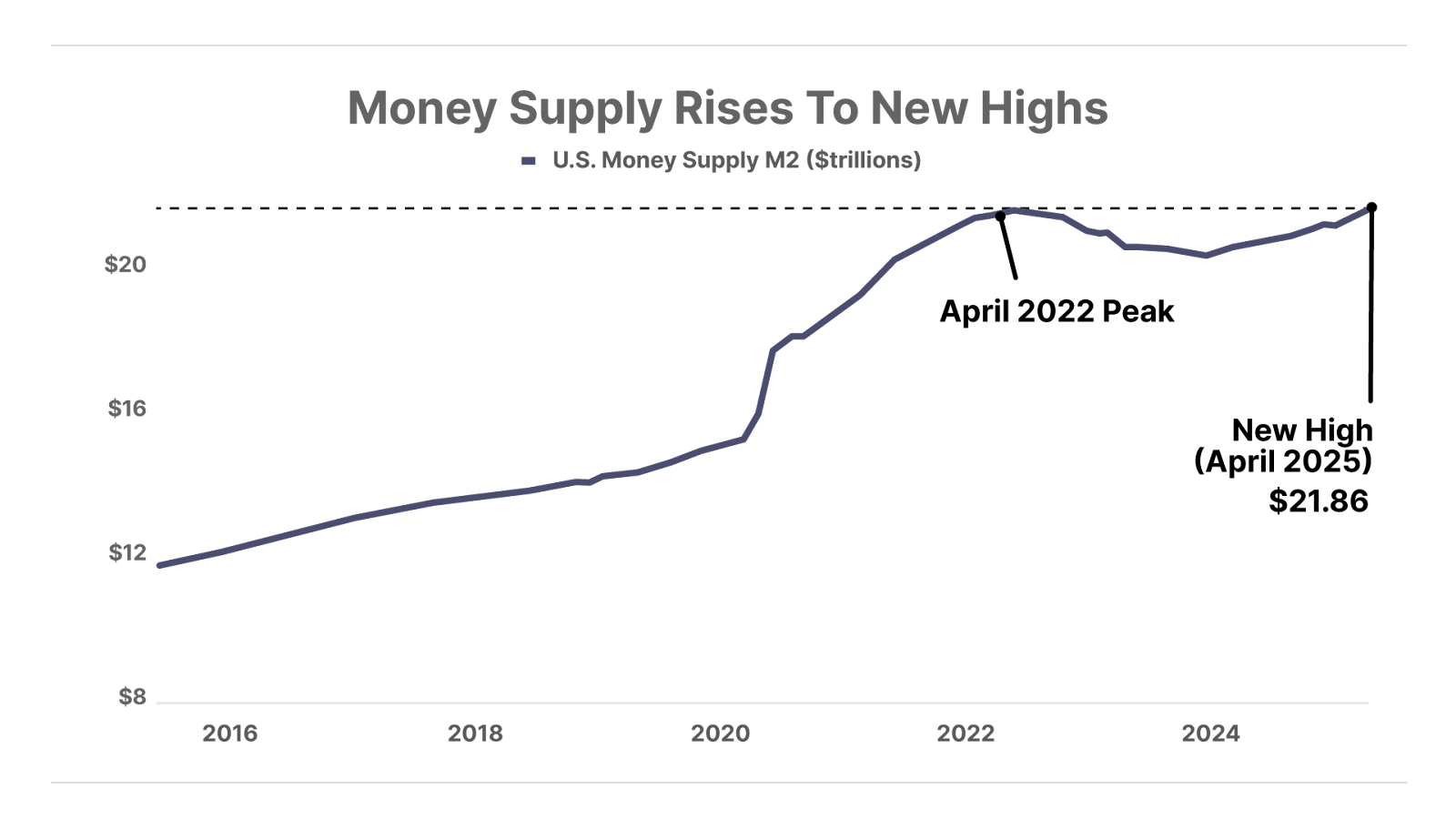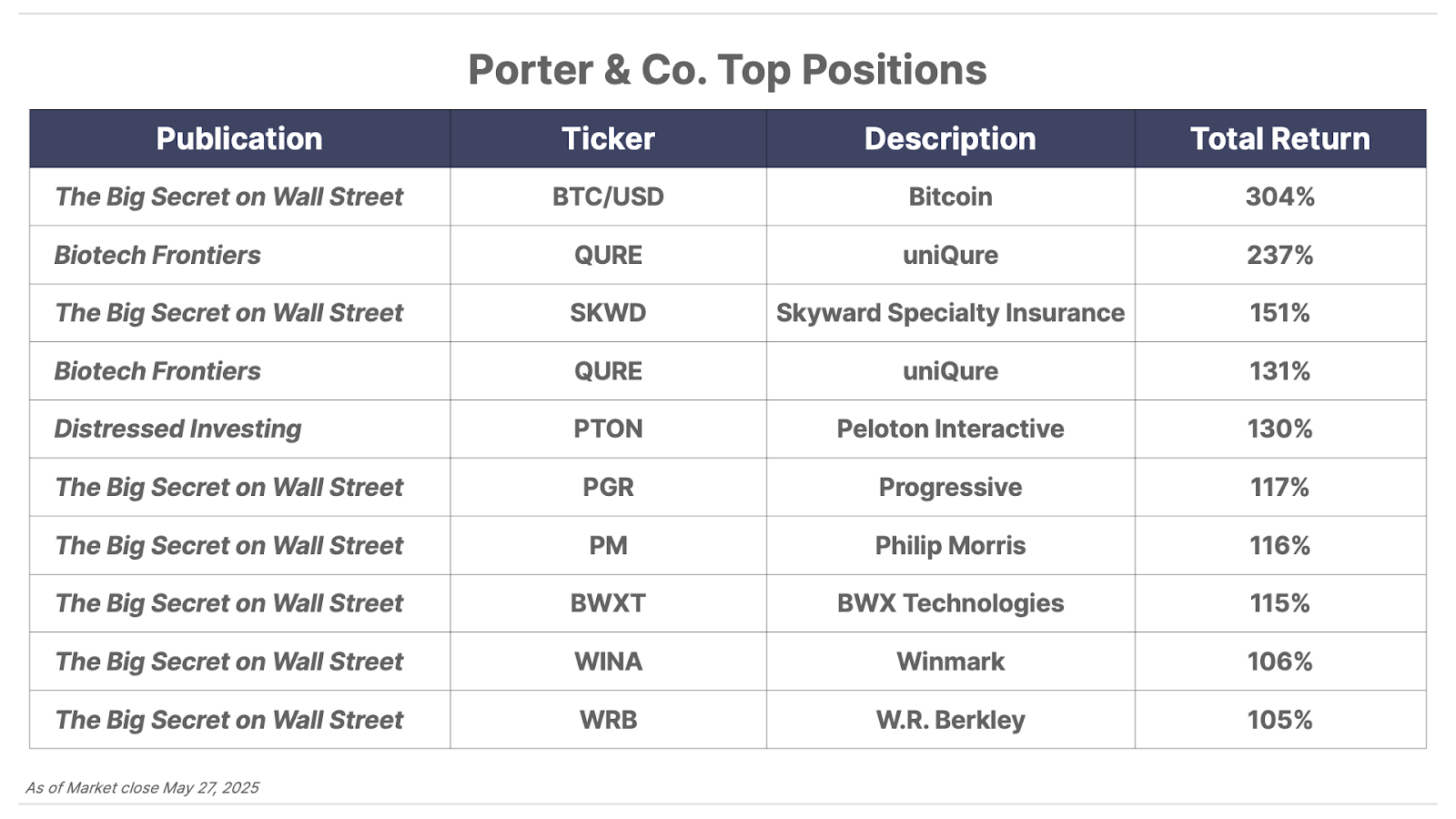Issue #61, Volume #2


Why Nvidia Will Be Vastly Bigger Than Intel
This is Porter’s Daily Journal, a free e-letter from Porter & Co. that provides unfiltered insights on markets, the economy, and life to help readers become better investors. It includes weekday editions and two weekend editions… and is free to all subscribers.
Tomorrow, Porter will launch one of the most audacious investment projects of his decades-long career. What he says could potentially create more wealth for his readers than anything he’s ever done before. Time is running out to be part of this revolutionary new project. For more details about his million-dollar mission – and how you can be a part of it – click here.
| The computing revolution has only just begun… The world will change more in the next 20 years than it has in the last 2,000… Nvidia reports earnings tonight… There’s a reason it is the most valuable business in the world… Musk is not a fan of One Big Beautiful Bill… |
They had no idea what they’d built.
On June 8, 1978, Intel (INTC) launched sales of its 8086 microprocessor. This was a 16-bit chip with 29,000 transistors.
At first, it didn’t seem like a big deal. Designed by Stephen P. Morse, the 8086 was meant as a stopgap to improve performance over Intel’s 8080 and 8085 while maintaining compatibility. Morse himself called it a “short-lived” project.
The key innovation was moving from 8-bit architecture to 16-bit architecture. Doesn’t sound like that big of a change, does it? You might guess it led to a 100% increase in computation power. No: it was a 2.5x magnitude improvement in computational power.
You see what “16-bit” means is that the 8086 could process data in 16-bit chunks. Thus, it could address 216 (65,536) memory locations simultaneously. That enabled vastly faster and larger computational functions compared to the previous, 8-bit (28 = 256) architecture.
This wasn’t an incremental improvement. It was a revolution.
What happened next changed the world and created well over $1 trillion in new wealth.
I’m sure you’ll remember how, starting in the 1980s, computing power was harnessed to more and more products that changed our lives forever.
- In 1980, Tim Paterson, at Seattle Computer Products, wrote the world’s first operating system – 86-QDOS: Quick and Dirty Operating System for Intel’s 8086. Microsoft licensed it in December 1980 and bought it outright on July 27, 1981, for $50,000, renaming it MS-DOS. Released with the IBM personal computer (“PC”), it became the dominant operating system, cementing Microsoft’s (MSFT) rise. By 1985, Microsoft’s revenues hit $140 million.
- On August 12, 1981, IBM launched its first PC. Priced at $1,565, it used an Intel 8088 (a cheaper and slower 8086 variant for its first PC). This standardized computing, spawning a $100 billion industry by 1990.
- The Pentium, launched March 22, 1993, was the evolution of the 8086 architecture, with 3.1 million transistors. It powered 90% of PCs by 1995, driving Intel’s market cap to $115 billion by 2000.
By 1987, 20% of U.S. offices had PCs. Lotus 1-2-3 (1983) and later Microsoft’s Excel transformed accounting functions. And, later, it was Intel’s microchips that enabled the internet to become commercial and then ubiquitous.
The PC revolution created $1 trillion in market value by 2000, according to McKinsey & Company, with Intel and Microsoft as anchors.
But there was one problem with the 8086 architecture: it was constrained by sequential processing. That is, even though Intel’s chips got bigger (growing to 32-bit and then 64-bit), they were still limited by clock speeds, which peaked at around 5 gigahertz in 2005.
Meanwhile, Nvidia (NVDA) was pioneering an entirely different way of computing.
Nvidia’s chips were built to produce video images, for use with video games. In this kind of computing, each point of resolution on the screen (each pixel) is independent from every other pixel. Thus, these chips were designed to process enormous amounts of data, fast, and in parallel – independently – not sequentially.
Nvidia’s GeForce 256, launched October 11, 1999, was the first GPU – graphics processing unit. It only had 23 million transistors. But rather than processing data sequentially, it used a new kind of parallel structure. And just like Intel’s 8086 needed a new operating system, Nvidia’s chips needed software to optimize their performance.
On June 23, 2006, at the International Supercomputing Conference (“ISC”) in Dresden, Germany, Nvidia introduced its latest and fastest ever parallel chip, the GeForce 8800 GTX – with almost 700 million transistors! But, even more importantly, Nvidia also created a new operating system for these chips – a programming interface called CUDA (Compute Unified Device Architecture).
Designed by a Stanford PhD candidate Ian Buck, CUDA launched with a small developer base made up primarily of academic researchers and high-performance computing enthusiasts. Today, there are more than 4 million (!) developers creating CUDA-powered games, applications, and programs. That’s 40x larger than the peak number of MS-DOS developers (1990).
Intel’s 8086, launched in 1978, birthed the PC era – almost by accident. It created Microsoft, led to the internet, and created a $1 trillion market by 2000. It digitized work and connected the world. The revolutionary power of the 8086 – and of massive increases to compute power – was as revolutionary as the impact of steam engines, railroads, the internal combustion engine, and even electricity itself.
But what Nvidia is doing is even bigger.
I don’t believe there’s any historical context for what’s happening right now with artificial intelligence (“AI”). How do I know?
Intel’s Pentium took 15 years to evolve from the 8086 into the Pentium, powering incremental software like Windows.
Nvidia’s GPUs now achieve that rate of innovation every two years: Kepler (2012), Pascal (2016), Ampere (2020), Hopper (2022), Blackwell (2024), each doubling performance.
The first real AI breakthrough was a computer that could accurately recognize images (the AlexNet 2012 breakthrough). It was programmed over several days on Nvidia GTX 580 chips. That same amount of processing would’ve taken years on CPUs because they operate sequentially.
Today Nvidia’s H100s train vastly more complex models like GPT-4 in weeks. Soon, it will be days.
And then, in a decade or so, in real time.
It is almost impossible to imagine what this will mean to the world.
Like I said, I do not believe there is any historic comparison, not just because of the enormous power that’s being unleashed but because of the pace of these innovations. The Christian revolution, for example, when humans began to understand the advantages of cooperation as opposed to plunder, has led to enormous wealth. But it took 2,000 years and remains incomplete.
Nvidia is creating a massively better world… in days.
All around us, in everything we do, Nvidia’s architecture is going to take over. And it will change the world in ways we cannot begin to imagine today.
- In 2023, AlphaFold 2, trained on Nvidia’s A100s, solved protein folding – the most important and valuable medical innovation of all time. This will vastly accelerate drug discovery and will lead to a massive increase in human life spans.
- Nvidia’s DRIVE platform powers Tesla’s Full Self-Driving (“FSD”), deployed in 1 million vehicles. Waymo’s self-driving taxis, using Nvidia’s A100s, have already logged 20 million autonomous miles and have reduced accidents by 30% where deployed.
- Nvidia is powering massive increases to education, globally. Khan Academy’s AI tutor, trained on Nvidia’s A100s, reached 10 million students globally in 2024. There’s no question that the entire structure of education – and especially college – will be dramatically restructured over the next few years. Why pay $100,000 a year for a teacher who isn’t 1% as smart as the generative-AI platform Grok?
- Nvidia will transform entertainment. Pixar’s Toy Story 4 (2019) used Nvidia GeForce RTX 2080s for real-time rendering, cutting production time by 40%. At some point within the next few years, someone will produce an entire Academy Award-winning feature film using only AI-generated actors and scripts.
I could go on… but what is happening in every part of our economy (and the world’s) because of this massive change to computing power, driven by a fundamental leap forward in computer architecture, will change the world far more than Intel did.
By orders of magnitude more.
And it will create massive amounts of wealth – more wealth than we can even comprehend. The world is going to change more in the next 20 years than it has changed in the last 2,000 years.
So just keep this in mind when Nvidia reports earnings tonight: There’s a reason it is the most valuable business in the world.
And it is going to become vastly more valuable in the years ahead.
P.S. If you haven’t read our special report, The Parallel-Processing Revolution, you really should. It goes into far more detail and explains all of the different businesses that are partnering with Nvidia to create this entire new computer ecosystem.
Must See By Tomorrow: ‘AI Investment Opportunity Of The Century Is Coming June 2’
Presented by Brownstone Research
Two financial legends have made the same big prediction for June 2.
A new AI stock could make you 1,000% with a chip 50 times faster than Nvidia’s. Watch them unveil and demonstrate a historic AI breakthrough that could soon replace the Magnificent Seven, cause a bigger crash, and create a new order in the market.
By tomorrow, see it here (includes three free recommendations).
Three Things To Know Before We Go…
1. Consumer delinquencies pile up. The latest data from the New York Federal Reserve shows serious delinquencies (over 90 days late on payment) are rising across every major form of consumer credit. This includes mortgages, car loans, credit cards, student loans, and HELOCs (home equity lines of credit). Given that America’s economy is built on consumer spending, rising delinquencies bodes poorly for future U.S. growth prospects.

2. The money printing press is back in action. The U.S. money supply hit a new all-time high, with $21.86 trillion now in circulation. Two years ago, M2, a key gauge of total money in circulation, was getting smaller by 4% – the sharpest decline in 65 years – as the Federal Reserve let Treasuries roll off its balance sheet without refinancing them. Today, M2 is growing at a 4.4% annual pace – an 8.8 percentage point swing in less than two years. With the resurgence of liquidity, expect rising inflation to follow.

3. Musk is not a fan of the “big, beautiful bill.” In a CBS interview scheduled to air this Sunday, Tesla CEO – and head of the Department of Government Efficiency (“DOGE”) – Elon Musk criticized the Republican spending bill passed by the U.S. House last week, saying that it “undermines the work that the DOGE team is doing.” He has a point… DOGE says it has saved around $170 billion in taxpayer funds to date. Meanwhile, the One Big Beautiful Bill Act is projected to increase the federal deficit by $3.8 trillion over the next 10 years, according to the Congressional Budget Office.
And One More Thing… Porter & Co. Is Hiring
Copywriters (we know you read this), Porter & Co. is looking for experienced financial copywriters. So if you’ve ever wanted to work alongside me (Porter), this is your chance. Just fill out this form here and we’ll be in touch.
Tell us what you think: [email protected]
Good investing,
Porter Stansberry
Stevenson, Maryland


Please note: The investments in our “Porter & Co. Top Positions” should not be considered current recommendations. These positions are the best performers across our publications – and the securities listed may (or may not) be above the current buy-up-to price. To learn more, visit the current portfolio page of the relevant service, here. To gain access or to learn more about our current portfolios, call Lance James, our Director of Customer Care, at 888-610-8895 or internationally at +1 443-815-4447.
